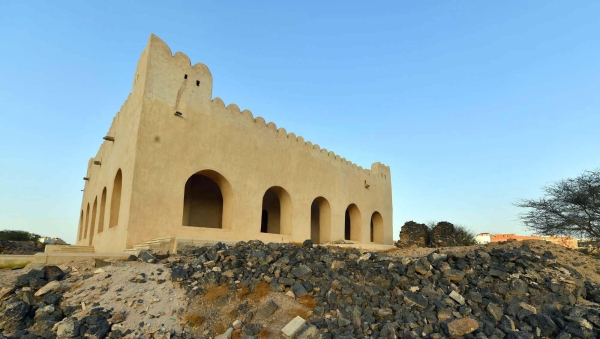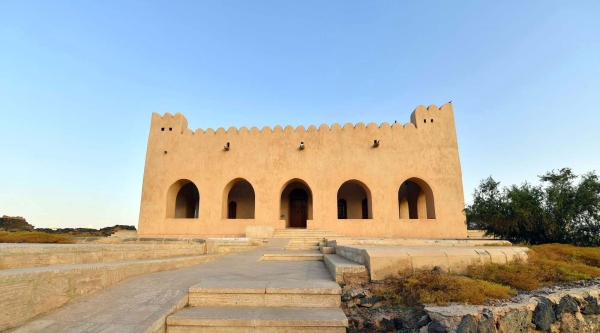


Urwah Bin al-Zubair Palace is an archeological palace located on the banks of Wadi al-Aqiq in al-Madinah al-Munawwarah, Kingdom of Saudi Arabia. It was built in the early eighth century, and it is about 3.5 km away from the Prophet’s Mosque. It is located on the road leading to Miqat Dhu al-Hulayfah (the Miqat of the people of al-Madinah al-Munawwarah) on the old Jeddah-Makkah al-Mukarramah Road.
Urwah Bin al-Zubair Palace was owned by the Tabi' Urwah Bin Zubair (a follower of the companions of the Prophet). The palace is distinguished by its presence in Wadi al-Aqiq, which includes palaces dating back to the Umayyad and Abbasid eras, the most famous of which are Saeed Ibn al-Aas Palace, Marwan Bin al-Hakam Palace, the Palace of Sa'd Ibn Abi Waqqas, and the Palace of Sakina Bint Hussain. Moreover, Urwah Well, characterized by the freshness of its water, is also situated in Wadi al-Aqiq.
Construction of Urwah Bin al-Zubair Palace
The palace is situated on the eastern shore of Wadi al-Aqiq, near Thaniyat al-Aqiq, facing Jabal Juma Tadara’a at the western end of Harrat al-Wabrah. When constructing the palace, Urwah Bin al-Zubair reclaimed the land and leveled it to prepare it for cultivation. He dug streams and created an inlet from Wadi al-Aqiq to his land to utilize its water. Initially, the buildings were simple, consisting of tall, round structures shaped like domes.
Contents of Urwah Bin al-Zubair Palace
The palace encompasses three courtyards of different sizes. Two courtyards overlook three rooms each, and the third leads to two rooms and a kitchen. The average size of these rooms is 2.20 m by 3.70 m. The palace walls were constructed using fifty cm thick stones, some of which were coated with clay, while others were plastered. The floors were compacted with pebbles and then covered with layers of clay and plaster. Brick tiles covered the surfaces, and the thresholds were made from volcanic stone.
Wells of Urwah Bin al-Zubair Palace
After Urwah Bin al-Zubair built his palace and reclaimed his land, he dug three wells: a well inside the palace, another called al-Usaylah, and a third designated for watering on the bank of the valley. The palace well and the watering well still exist today. The latter garnered praise from poets for its sweet, pure, and cold water. Situated along the route of travelers to Makkah al-Mukarramah, it served as their exclusive water source, replenishing their supplies from it. To this day, the people of al-Madinah al-Munawwarah refer to the road as Urwah Road, which was the path for travelers to Makkah al-Mukarramah.
Restoration of Urwah Bin al-Zubair Palace
In 2014, the General Authority for Tourism and Antiquities (formerly) restored and rehabilitated the Urwah Bin al-Zubair Palace. Restoration works included consolidation, dismantling, and removal, as well as foundation restoration, soil treatment, and the restoration of stone and mud walls, columns, stone arches, and wooden ceilings. Other works include treating cracks and plastering works of all kinds, insulation, restoration of wooden doors and windows, and electrical and mechanical works.
Related quizzes
Related articles
